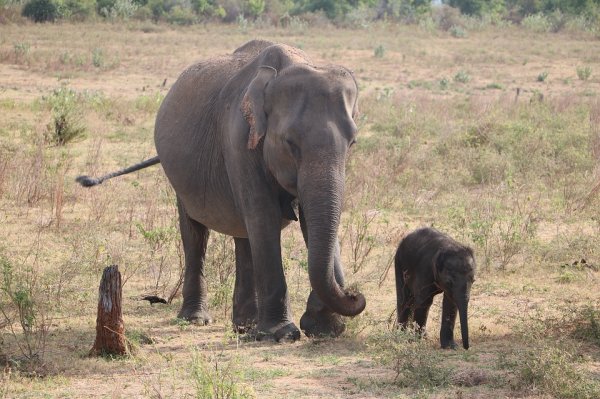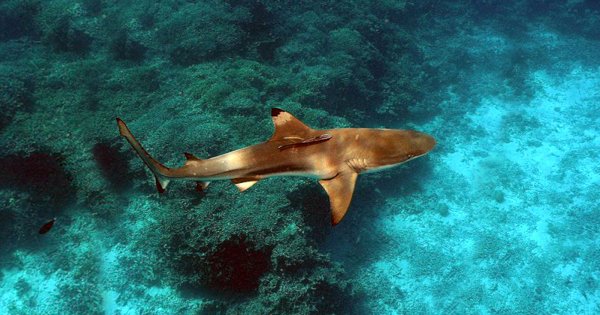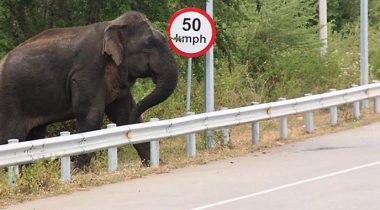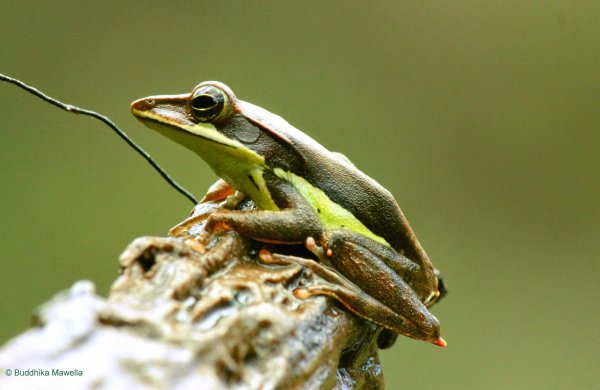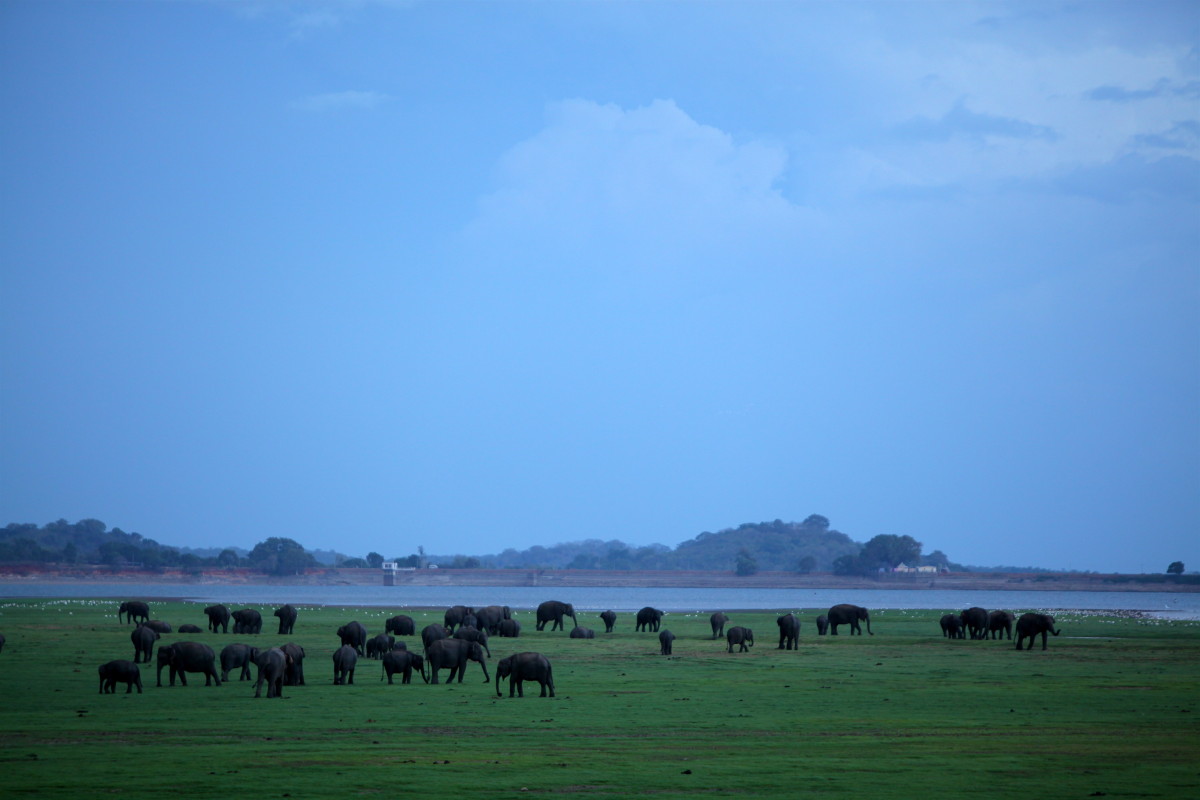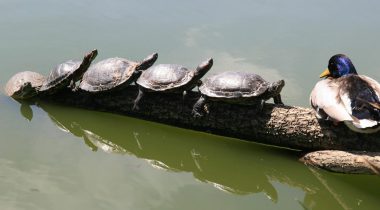
Islands are host to unique and fragile ecosystems. Sri Lanka is no different, being home to innumerable species of flora and fauna that have evolved independently of their cousins in the mainland Indian subcontinent.
In such delicate circumstances, things can go awry when foreign species compete with indigenous ones for resources. In fact, research by the Convention on Biological Diversity has shown invasive species to be responsible for 40% of animal extinctions since the 17th century.
As far as Sri Lanka is concerned, foreign species were first introduced during the colonial period. Since the liberalisation of Sri Lanka’s economy in the ’70s, however, a new wave of foreign species has entered the island thanks to developments in the agriculture, aquaculture, and exotic pet industries.
Today, the Ministry of Mahaweli Development and Environment lists the “Spread of Alien/Invasive Species” as one of the many environmental challenges that Sri Lanka is faced with. Operating under the auspices of this Ministry, the Invasive Alien Species (IAS) Sri Lanka Project has compiled a list of foreign species that are classified as IAS.
The following are seven fauna listed by the IAS Project as having, “the potential to cause damage to the environment, human health, livelihoods and the economy.”
1. Red-eared Slider (Trachemys scripta)
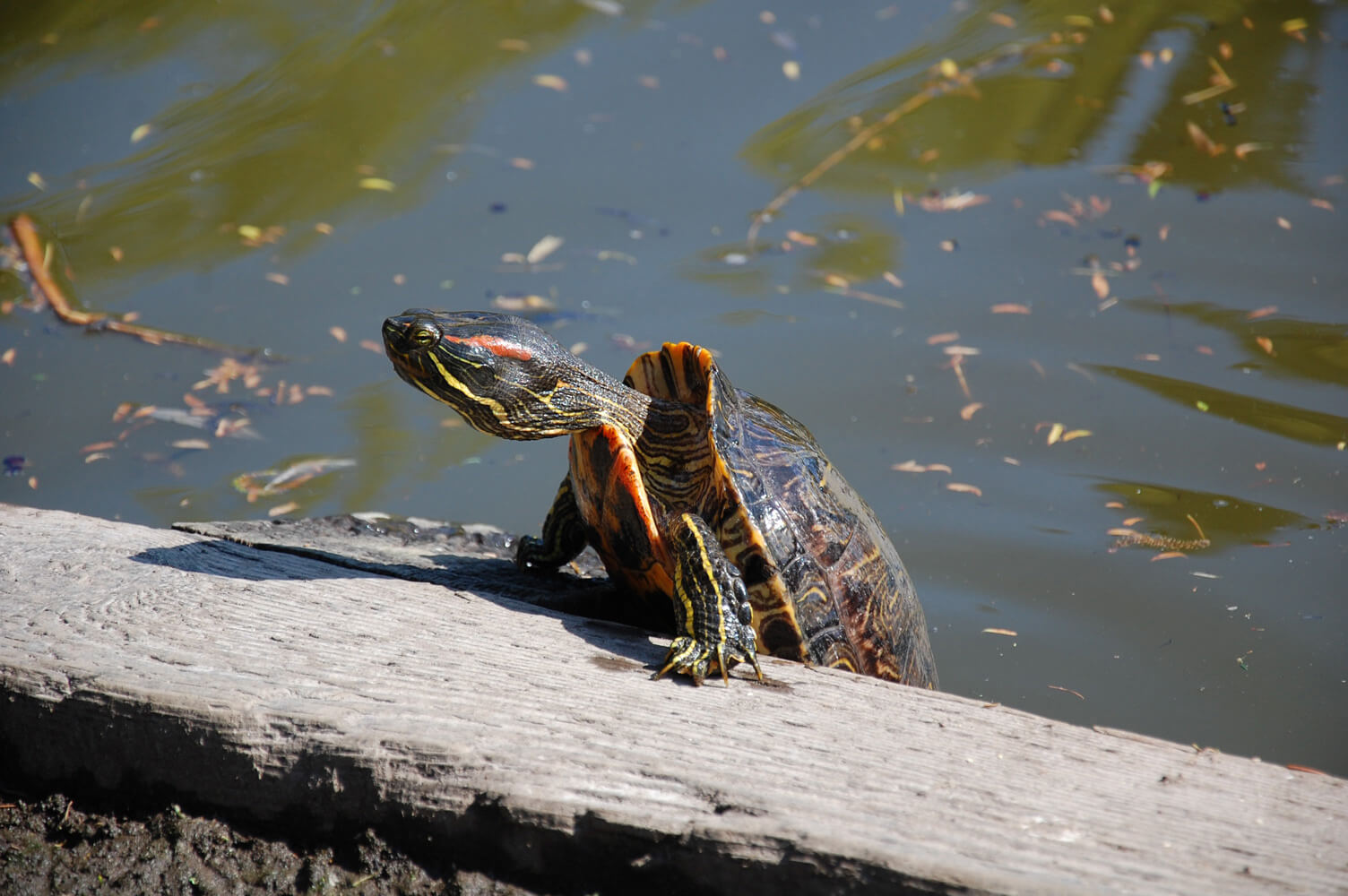
Arguably the world’s most popular pet reptile. Image courtesy turtleholic.com
This tenacious terrapin is arguably the world’s most popular pet reptile ‒ thanks to its miniature size, relatively low maintenance, and uniquely interactive personality. Originally endemic to North America, the semi-aquatic critter was introduced to Sri Lankan aquarists in the ’80s.
Today, the slider is known to inhabit wetlands in the Western and North Central provinces, and can breed all year round ‒ laying up to 30 eggs, which hatch after about 60-110 days. Sliders prey on local fish spawn and can be aggressive towards other turtles, competing for both food and nesting grounds with vulnerable endemic species.
The red-eared slider is the only turtle listed in the International World Conservation Union’s list of the 100 most dangerous invasive species on the planet. Both the European Union and South Africa have banned imports of Red-eared Sliders due to their detrimental impact on the environment.
2. Clown Knifefish (Chitala ornata)

This fish here has been blamed for a drastic decline in six species of native fish and a species of frog. Image courtesy iassrilanka.lk
Also known as the clown featherback or spotted knifefish, this critter looks every bit as theatrical as it sounds ‒ growing up to a metre in length and weighing in at around 5 kgs. It is recognisable by its long feathery anal fin and spotted tail.
Introduced to Sri Lanka through the aquarium trade in the ’80s, the knifefish originates in south-eastern India and parts of Burma, Thailand, and Laos. However, since escaping aquarium life, the knifefish has spread to the North Western, North Central, Western and Southern Provinces of Sri Lanka. Further imports were banned through a gazette notification in 2003.
The knifefish preys on everything from smaller fish, to amphibians, insects, and crustaceans, and has been blamed for a drastic decline in six species of native fish and a species of frog.
3. Marble Catfish (Clarias batrachus)

Marble catfish, also known as ‘walking catfish’. Image courtesy iassrilanka.lk
Distinguished by its scaleless, mucus-covered skin, marble catfish are usually brown or black in colour. The specimens found in Sri Lanka, however, are often albino or spotted variations that are valued by aquarists.
Marble catfish are popularly known as ‘walking catfish’ thanks to their remarkable ability to use their pectoral fins to wiggle around land, hunting for food and traversing from one waterbody to another. Their ability to breathe fresh air means they can survive even stagnant and polluted waters.
Originating in Southeast Asia, where they are considered a delicacy, the marble catfish can now be found in the rivers and canals of the Western and North Western Provinces. With a rapid growth rate and an implacable appetite, it could outcompete local species of catfish.
4. Rainbow Trout (Oncorhynchus mykiss)
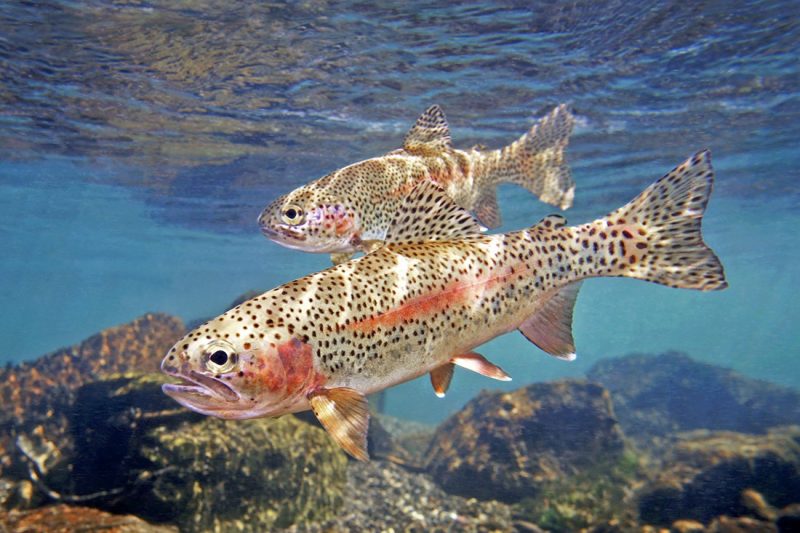
Rainbow trout have proven to be a serious threat to native freshwater shrimp populations. Image courtesy fisheyeguyphotography.com
Perhaps the most glamorous of the fish on this list, the rainbow trout is recognisable by its iconic silvery skin, spots, and a horizontal pink line that runs along both its sides.
Native to the Pacific coasts of Siberia, the US, and Canada, the rainbow trout was introduced to streams in the central hills of Sri Lanka in 1889. The purpose of their introduction by British colonists was, not for aquaculture, but for sport.
Today, the trout has established habitats up country in Belihuloya, Agra Oya, and the Horton Plains ‒ where park regulations prevent anglers from controlling the trout population. Predation by rainbow trout has lead to a gradual decline in native freshwater shrimp.
5. Scavenger (Pterygoplichthys spp)

The scavenger fish, also known as the tank cleaner. Image courtesy iassrilanka.lk
Popularly know as the “tank cleaner” or “janitor fish”, scavengers are highly valued specimens for large aquariums and are bred commercially for the purpose of consuming and controlling algae.
Originating from lakes and streams in South America, scavengers are thought to have escaped Sri Lankan aquariums around the ’90s. Wild populations can now be found in rivers and tanks in the Western, North Western, Central, and Eastern provinces.
Scavengers are notorious for producing large quantities of waste and their appetite for aquatic weeds could displace endemic algae-eating fauna. Furthermore, the tendency of male scavengers to dig tunnels could muddy freshwater bodies and damage shorelines ‒ disrupting the ecosystem for less aggressive species.
6. Apple Snail (Pomacea spp)
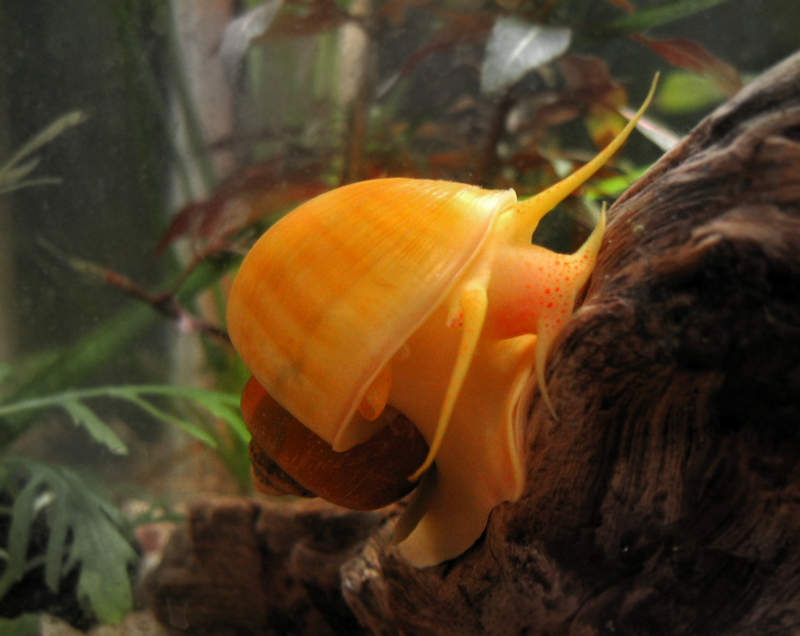
This snail gets its name from the shape of its unique shell. Image courtesy flickr.com/Roo Reynolds
Perhaps the most visually striking critter on this list, the apple snail ‒ sometimes called the golden apple snail ‒ gets its moniker from its unique shell which is golden-yellow in colour and round in shape like an apple.
A popular specimen for aquarists around the world, this snail originates in the Amazon basin of South America. Since its introduction to Sri Lanka in the late ’70s, escaped specimens have multiplied and made their homes in Kalutara, Kandy, Ratnapura, Gampaha, Matara, and Galle.
Research on the ecological effects of apple snails on native wildlife is lacking, with experts unsure of the snail’s exact species designation. However, this mollusc is considered a threat to native aquatic flora as well as scavenging fish and crustaceans, with whom the snail competes.
7. Giant African Snail (Lissachatina fulica)
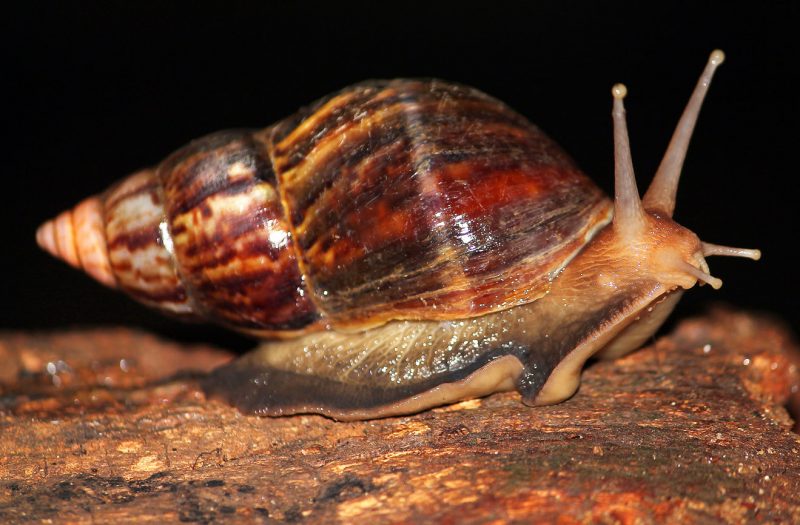
Many mistake this one to be a native species, but it is not. Image courtesy iassrilanka.lk
Known in Sinhalese as the ‘Kalutara gollubella’, many mistake this ubiquitous mollusc for being a native to the island, due to its familiar presence after rains throughout urban and suburban areas.
Originating in coastal East Africa, researchers speculate that the snail was introduced to Sri Lanka accidentally by a British planter in the 1900s. Today, the snail is found islandwide ‒ most commonly in agricultural lands where it is known for its fondness for chilli plants.
There is little research documenting the direct impacts giant African snails have had on indigenous wildlife, however the snail has been a great financial burden to the agriculture industry due to destruction of crops and the subsequent need to import molluscicides.
Illegal Aliens?
According to IAS Sri Lanka Project Consultant K. W. P. Thilakaratne, there are many more foreign species throughout Sri Lanka that pose a potential threat to the indigenous ecosystem, beyond what has been listed by the IAS Project.
Explains Thilakaratne, “At the IAS Project we go through a risk assessment process and allocate marks to each invasive species according to their threat level. There are more species out there and more research needs to be done, but these species have been confirmed as a threat.”
Research in the field of IAS is wanting, but even additional research could have little impact without legal support. In 2012, the Ministry of Environment formulated a National Invasive Alien Species Policy which has since been approved by Parliament. More recently, the Ministry has drafted an Invasive Alien Species Act, which is pending review at the Legal Draftsman’s Department.
But environmental lawyer Jagath Gunawardana says that provisions to control IAS already exist in legislation like the Flora and Fauna Protection Act and the Fisheries and Aquatic Resources Act, and while complementary legislation is welcome, gaps remain in enforcement.
Says Gunawardana, “A lot of resources are required to carry out research and political will is needed to enforce bans. Identifying safe methods to dispose of invasive species without harming the surrounding environment continues to be a challenge, but it is necessary in order to protect our unique local wildlife.”
Liked this article? Check out our video here.
Featured image courtesy turtleholic.com


